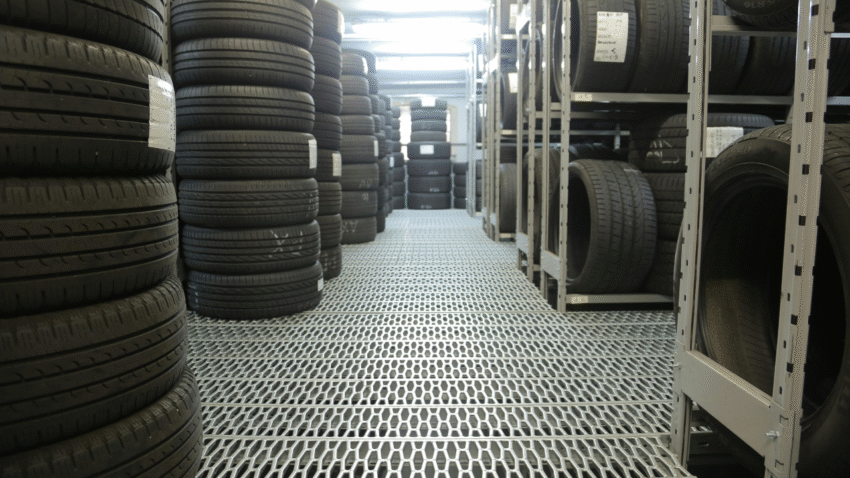Introduction
Your garage doesn’t have to be just a place to park your car or store boxes. With some planning and creativity, it can become a multi-functional space that serves multiple purposes—like a workshop, home gym, hobby area, or even a home office—while still keeping enough room for vehicle storage.
This guide will show you how to plan, organize, and transform your garage into a versatile, functional space without sacrificing comfort or accessibility.
Benefits of a Multi-Functional Garage
- Maximized Space: Make the most of every square foot in your home.
- Increased Property Value: A well-organized, functional garage appeals to buyers.
- Convenience: Access multiple work or leisure zones in one location.
- Customization: Tailor the space to your specific lifestyle needs.
Step 1: Determine Your Needs and Goals
Before rearranging or buying anything, decide what functions you want your garage to serve. Common multi-functional uses include:
- Vehicle Parking & Storage (primary use for most garages)
- Workshop or Craft Area (tools, workbenches, and materials)
- Home Gym (weights, treadmill, yoga mat)
- Home Office or Study (desk, computer, file storage)
- Entertainment or Game Room (TV, seating, games)
- Laundry Area (washer, dryer, folding station)
Tip: Be realistic about what will fit in your space without making it cramped.
Step 2: Clear Out and Declutter
A multi-functional garage works best when unnecessary items are removed.
- Sort: Keep, donate, sell, or discard items.
- Deep Clean: Sweep floors, wipe down shelves, and remove cobwebs.
- Inspect: Check walls, ceilings, and flooring for needed repairs before you start rearranging.
Step 3: Plan the Layout
A successful multi-functional garage relies on smart zoning—dividing the space into designated areas for different uses.
1. Parking Zone
- Keep this nearest to the garage door for easy access.
- Mark parking spots with paint or mats to maintain boundaries.
2. Storage Zone
- Use high shelves, overhead racks, or wall-mounted systems to keep items off the floor.
- Group similar items together—seasonal gear, sports equipment, tools.
3. Activity Zones
- Dedicate sections for hobbies, workouts, or work.
- Place work areas near electrical outlets and lighting.
Pro Tip: Draw a floor plan before moving heavy furniture or equipment.
Step 4: Invest in Smart Storage Solutions
Maximizing vertical and overhead space is key to making a garage serve multiple functions.
- Wall-Mounted Shelves: Keep tools, boxes, and supplies off the ground.
- Pegboards: Organize hand tools and craft supplies in plain sight.
- Overhead Storage Racks: Store seasonal or rarely used items.
- Modular Cabinets: Lockable storage for valuable or hazardous items.
- Rolling Carts: Mobile workstations that can be moved as needed.
Step 5: Upgrade Lighting and Electrical Outlets
Since your garage will be used for more than just parking, proper lighting and outlets are essential.
- LED Overhead Fixtures: Bright, energy-efficient light for general use.
- Task Lighting: Focused lighting for workbenches or craft tables.
- Extra Outlets: Install additional outlets for gym equipment, power tools, or electronics.
- Smart Plugs: Control lighting and devices from your phone or smart home system.
Step 6: Add Comfort Features
To make your garage truly multi-functional, comfort matters.
- Flooring: Consider epoxy coating, interlocking tiles, or rubber mats for easy cleaning and cushioning.
- Climate Control: Add insulation, portable heaters, or fans to maintain a comfortable temperature.
- Seating: Include foldable chairs or benches for rest or work breaks.
- Soundproofing: If using power tools or playing music, consider acoustic panels to reduce noise.
Step 7: Create Flexible, Movable Spaces
Flexibility is the secret to multi-functional garages.
- Folding Furniture: Desks, tables, and benches that fold away when not in use.
- Sliding Partitions: Separate spaces for privacy or noise control.
- Rolling Storage Units: Move items around to reconfigure the space as needed.
Step 8: Maintain a Clutter-Free Environment
Even the most well-planned multi-functional garage can quickly become messy without upkeep.
- Label Everything: Use clear bins and labels to easily find items.
- Schedule Clean-Ups: Spend 15–30 minutes weekly tidying up.
- Seasonal Rotation: Move seasonal gear (snow shovels, lawnmowers) into accessible positions when needed.
Examples of Multi-Functional Garage Setups
1. Garage + Gym + Storage
- Wall-mounted racks for gym equipment.
- Foldable squat rack and bench to free up space when not in use.
- Overhead racks for seasonal storage.
2. Garage + Workshop + Parking
- Workbench along one wall with pegboard tool organization.
- Parking space marked and kept clear.
- Rolling tool chest for mobility.
3. Garage + Office + Hobby Room
- Desk and office chair in a corner with good lighting.
- Shelving for hobby supplies.
- Portable divider to create a quieter work zone.
Cost Considerations
- Basic Reorganization (DIY): $100–$500 for shelving, bins, and lighting.
- Mid-Level Upgrade: $500–$2,000 for flooring, furniture, and additional outlets.
- Full Renovation: $2,000–$10,000 for climate control, built-in cabinets, and specialized equipment.
Safety Considerations
- Fire Safety: Keep flammable materials stored securely away from heat sources.
- Ventilation: If working with paints, chemicals, or machinery, ensure good airflow.
- Weight Limits: Don’t overload overhead storage racks or shelving.
- Electrical Safety: Hire a licensed electrician for wiring upgrades.
Conclusion
Making your garage multi-functional is all about smart planning, zoning, and efficient use of space. With the right storage systems, lighting, and layout, you can enjoy a garage that meets multiple needs—whether that’s working out, building projects, working from home, or simply keeping things organized. The key is to design it in a way that’s flexible, clutter-free, and easy to maintain, ensuring it remains one of the most useful rooms in your home.
